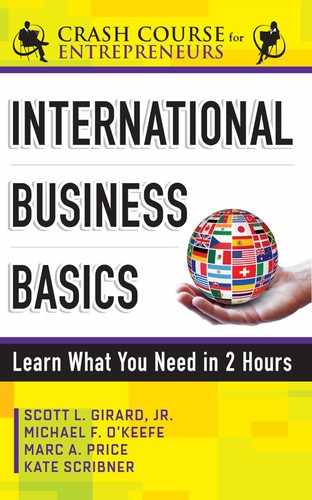Market Research and Data Collection
Doing your homework, through extensive research and
analysis, is essential in laying the proper foundation
for your expansion to new markets.
IT’S PROBABLY SAFE TO SAY that most of us hated homework as school kids. It took a lot of time away from other enjoyable activities and seemed tedious and unnecessary at times. Today, as an entrepreneur researching a new market abroad, you may feel like you’ve traveled back in time, doing your homework. Performing endless research, analyzing data, following up on inquiries, and then evaluating the information once again can seem tedious at times. But the result of this exhaustive process should garner invaluable facts, figures and market trends you’ll need to know when devising your international growth plans. And hopefully you’ll also have some eureka moments, when you discover something exciting and promising for your business.
Understand the terms and their importance
If market research is a relatively new activity for you, don’t worry, just get started. It’s basically a well-planned process to help you assemble a working picture of specific target markets and/or the consumers or vendors within those markets that matter to you. The amalgamation and then analysis of that information can then help you assess the likelihood of your products and services succeeding there.
In your data collection, you will probably use multiple sources (interviews, email, phone calls, surveys, questionnaires, the business press, online information, etc.). Those sources can deliver either quantitative research (numbers or quantities) or qualitative forms (impressions, interpretations or images, rather than numbers). Assuming you are tapping reliable sources, you can digest and analyze the results to fill in more and more areas of your map of the local business landscape.
Why is all of this necessary? Think about it a minute: You’re quite possibly talking about doing business halfway around the globe, in a culture, language and business world you may know little about today. Unforeseen obstacles could be waiting in the wings. You can’t expect to know what you need to know about a new target market unless you do the proper research and analysis. Everything, from logistics to location and from market trends to demographics, needs thorough investigation to ensure your international business plans are on the right track. Investors and banks alike will want to review your findings in the form of reports, charts, graphs and narratives within your business plan as well.
Formulate questions… then go get those answers
Let’s quickly assemble a few key questions to demonstrate how vital your homework is regarding your target market, assuming for the moment you sell products. If you sell services, or if your target market is going to be a source of supply or an outsource location, you can adapt the questions and add others accordingly.
• What are the current market conditions for my products there?
• How do the current (and projected) demographics correlate to my products?
• Do I need to have a physical presence? If so, where should I locate?
• What does the real estate market look like and how much will I have to pay to operate in the areas I am considering?
• What are the transportation options in these locations?
• How far will a customer be willing to travel to my business?
• What do the employment and earnings numbers look like in the region?
• Can I find quality employees in the locations I’m considering?
• What are the logistics involved in filling orders and receiving or sending shipments from the location(s)?
• Is this market considered on the up-turn or is it on a downward trend?
• Will cultural adaptation or translation be necessary, and affordable?
• What is the lead time from first commitment to first income and then break-even?
• What’s the situation regarding payments? Corruption? Connections?
These questions will probably trigger more that you’ll think of as you do your homework. Think of them as a small sampling of what will you will need to investigate before you can formulate a proper business plan.
Key areas to research to get the ball rolling
Let’s also take a minute and list just a few segments of concentration (in no specific order of importance) that, without being overwhelming, can get you started on determining the practicality of your expansion to a specific region:
• The political climate, local laws and governing bodies and their possible effects
• Import and/or export opportunities and roadblocks
• Projected construction or development projects in the area
• Banking and finance infrastructures
• Current competitors and their success/failure rate in the area
• The presence of counterfeit goods or piracy
• Possible patent, trademark, licensing and other product safeguards
Drill down using SWOT analysis
The purpose of a SWOT analysis is to help you build powerful business strategies by ensuring you identify the key Strengths, Weaknesses, Opportunities and Threats your business possesses or faces regarding the target market.
The first two components, strengths and weaknesses, are internally measured (e.g., company reputation, location(s), patents, etc.). You can influence them, altering and restructuring them when necessary. The other two, opportunities and threats, are external in nature (laws, competitors, environmental concerns), and are mostly elements you cannot control. All of these elements can make or break your success, and therefore it pays to know which things you can change, and which you’ll need to adapt to, in your target market.
Just as we all learned as kids, the better you do your homework, the better chance you have to get good mark and positive results. As an entrepreneur, being prepared through research, analysis and in every possible way is not just a good way of initiating your international expansion plans… but the only way.
M.P.
